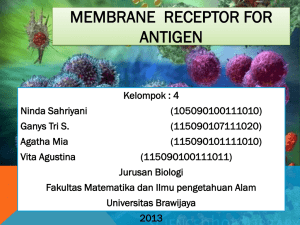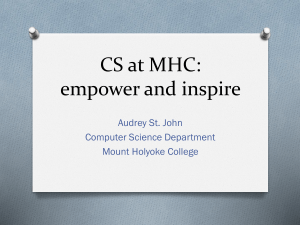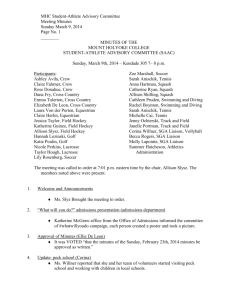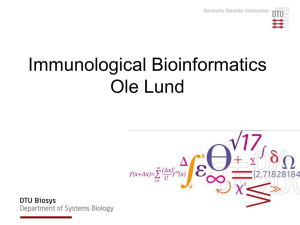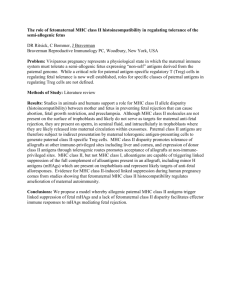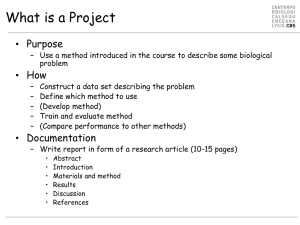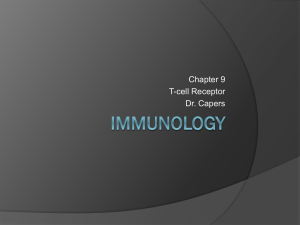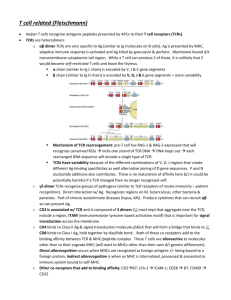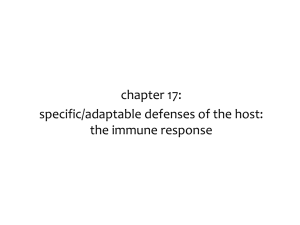Quiz 2 10/24/13
advertisement
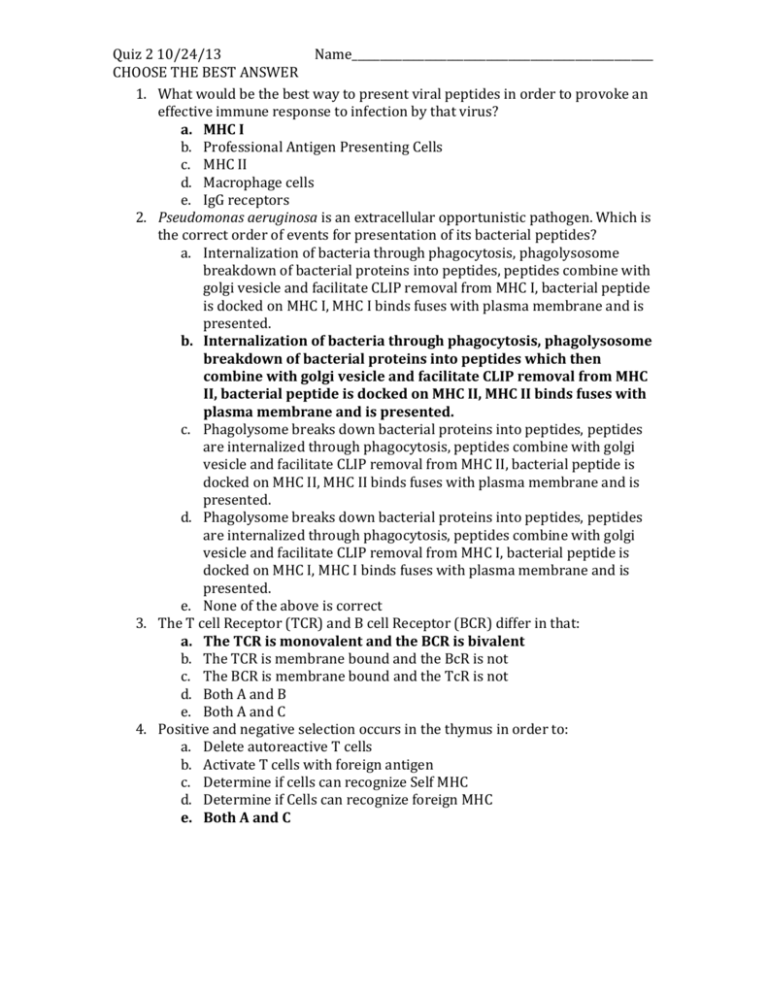
Quiz 2 10/24/13 Name______________________________________________________ CHOOSE THE BEST ANSWER 1. What would be the best way to present viral peptides in order to provoke an effective immune response to infection by that virus? a. MHC I b. Professional Antigen Presenting Cells c. MHC II d. Macrophage cells e. IgG receptors 2. Pseudomonas aeruginosa is an extracellular opportunistic pathogen. Which is the correct order of events for presentation of its bacterial peptides? a. Internalization of bacteria through phagocytosis, phagolysosome breakdown of bacterial proteins into peptides, peptides combine with golgi vesicle and facilitate CLIP removal from MHC I, bacterial peptide is docked on MHC I, MHC I binds fuses with plasma membrane and is presented. b. Internalization of bacteria through phagocytosis, phagolysosome breakdown of bacterial proteins into peptides which then combine with golgi vesicle and facilitate CLIP removal from MHC II, bacterial peptide is docked on MHC II, MHC II binds fuses with plasma membrane and is presented. c. Phagolysome breaks down bacterial proteins into peptides, peptides are internalized through phagocytosis, peptides combine with golgi vesicle and facilitate CLIP removal from MHC II, bacterial peptide is docked on MHC II, MHC II binds fuses with plasma membrane and is presented. d. Phagolysome breaks down bacterial proteins into peptides, peptides are internalized through phagocytosis, peptides combine with golgi vesicle and facilitate CLIP removal from MHC I, bacterial peptide is docked on MHC I, MHC I binds fuses with plasma membrane and is presented. e. None of the above is correct 3. The T cell Receptor (TCR) and B cell Receptor (BCR) differ in that: a. The TCR is monovalent and the BCR is bivalent b. The TCR is membrane bound and the BcR is not c. The BCR is membrane bound and the TcR is not d. Both A and B e. Both A and C 4. Positive and negative selection occurs in the thymus in order to: a. Delete autoreactive T cells b. Activate T cells with foreign antigen c. Determine if cells can recognize Self MHC d. Determine if Cells can recognize foreign MHC e. Both A and C Quiz 2 10/24/13 Name______________________________________________________ CHOOSE THE BEST ANSWER 5. Correct assembly of functional MHC II proteins loaded with antigenic peptides from exogenous sources requires which of the following proteins or protein complexes: a. TAP b. CD8 c. CLIP, Class II-associated invariant chain peptide d. Perforin e. BCR 6. When the innate immune system encounters a foreign antigen, what cell-surface molecule plays the role of recognizing the presence of a foreign antigen? a. Antibody b. T cell receptor c. The membrane attack complex of complement d. Toll-like receptor e. HLA Class II 7. Identify the TRUE statement about MHC molecules. a. T cells can usually recognize antigen bound to either self or non-self MHC. b. MHC Class I is composed of one unique alpha chain and the common beta2 microglobulin chain. c. MHC Class II is recognized by CD8+ T cells. d. MHC Class I has the primary role of recognition of self-peptides. e. MHC Class I proteins expressed on a given T cell as either the cassette of MHC inherited from mom or as the cassette of MHC inherited from dad. 8. Superantigens _____. a. b. c. d. e. bind in the antigen-binding cleft of MHC Class I. bind in the antigen-binding cleft of MHC Class II. bind to non-antigen-specific regions of MHC and TCR. trigger clonal anergy. activate Th1 cells that recognize the cognate antigen present on the superantigen. 9. Which of the following cytokines can cause directional movement of cells in a gradient? a. Tumor Necrosis Factor alpha (TNF-α) b. Interleukins (ILs) c. Interferons (IFNs) d. Lymphokines e. Chemokines 10. Which of the following statement(s) is true about the complement system? a. They are a part of the adaptive immune response. b. There are three pathways, all of which require activation by antigenantibody interaction. c. It can lead to assembly of a membrane attack complex (MAC), which is inserted into the lipid bilayer. d. both b and c e. all of the above
